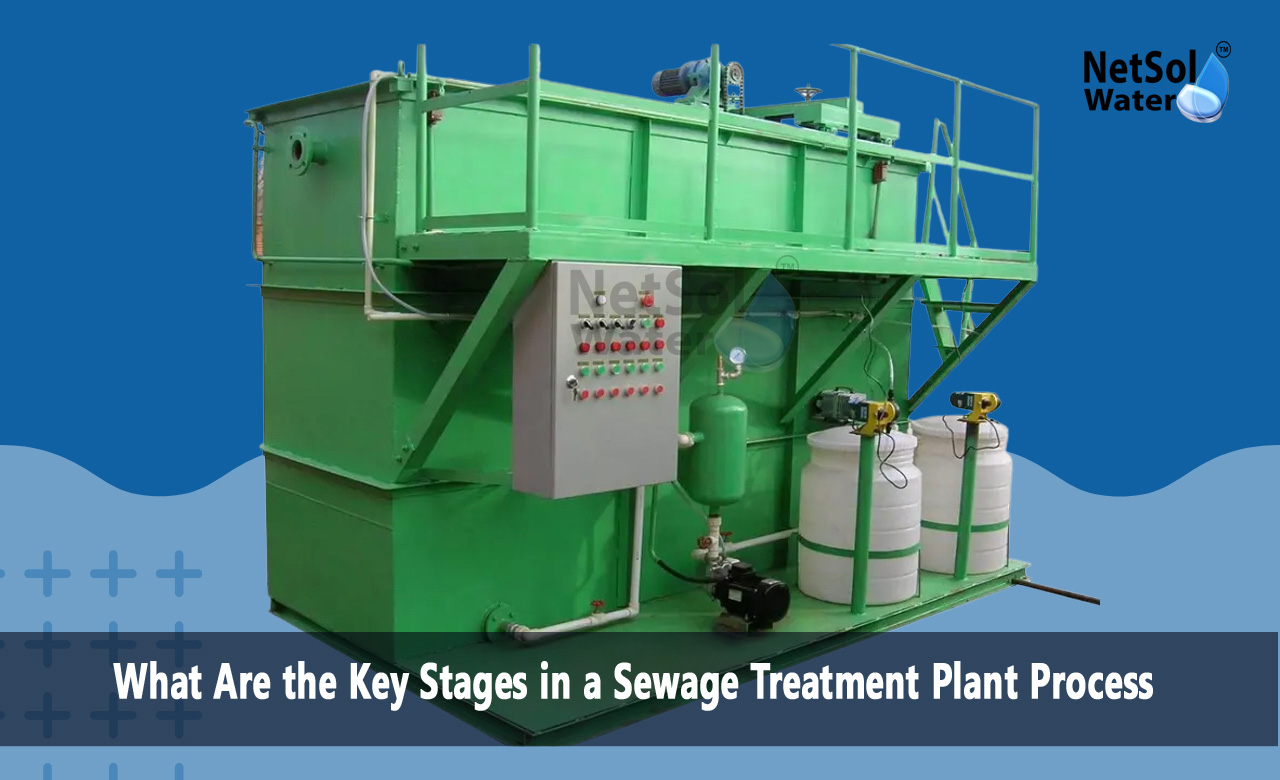What Are the Key Stages in a Sewage Treatment Plant Process?
Sewage treatments are essential to preserve public health as well as the environment. A sewage treatment plant is the secret to purifying contaminants from wastewater before allowing it to flow innocently into water bodies or being recycled for reuse. They follow a sequential series of treatment for ensuring that the sewage is purified to the extent of purity set by law. Every process targets a certain kind of pollution, decomposing organic matter, releasing solids, and eradicating toxic chemicals.
Among the many companies providing reliable wastewater solutions, Netsol Water is the best sewage treatment plant manufacturer with efficient and high-quality systems to serve various industries. Their experience guarantees every process of treatment is carried out perfectly and effectively, ensuring cleaner water and a cleaner environment.
Major Steps in a Sewage Treatment Plant Process
Initial Treatment
The initial treatment is the first operation of the sewage treatment plant process, where the coarse debris and solids are removed. This is done via bar screens and grit chambers that remove items such as sticks, plastic, and sand. The objective is to prevent equipment damage in subsequent stages of treatment and provide easier flow in the system.
In this phase, the sewage is subject to initial filtration, which helps in protecting the more sensitive parts of the treatment plant. For heavy-duty sewage treatment plants for industries, Netsol Water ensures that their designs are very efficient initial treatment, with high capacity to treat waste with little maintenance.
Primary Treatment
In primary treatment, sewage is allowed to settle in large tanks where solids (sludge) accumulate at the bottom of the tanks and lighter materials like oils and grease float on the surface. These are mechanically removed. Primary treatment primarily removes heavy loads from suspended solids and some of the organic content from wastewater.
Netsol Water, as the leading sewage treatment plant manufacturer, offers systems that optimize this stage so that efficient removal of solids with less load on later stages of treatment is achieved. Their systems are optimized to meet the specific needs of different types of wastewater and are well-suited for performance.
Secondary Treatment
Secondary treatment is the backbone of most sewage treatment plant operations. It is treatment wherein biological action is employed for breaking down organic residues remaining from primary treatment. It is normally the use of microorganisms which feed on organic pollutants in the wastewater. It is carried out mainly through the medium of activated sludge or other biologically, e.g., Moving Bed Biofilm Reactors (MBBR).
Netsol Water, as industry pioneers, utilize advanced biological treatment processes within their sewage treatment plants. Their use of latest technology makes secondary treatment highly effective, successfully breaking down residual organic matter to attain desired effluent quality levels.
Tertiary Treatment
Tertiary treatment is the final treatment before discharge or reuse of treated water. Tertiary treatment eliminates any residual pollutants that could still be present after secondary treatment, e.g., nutrients (phosphorus and nitrogen), pathogens, or fine particulates. During this process, techniques such as filtration, chemical treatment, and UV disinfection are typically used to treat water further.
Netsol Water, being the best sewage treatment plant manufacturer, offers tertiary treatment solutions in its entirety that ensure effluent quality to environmental standards of the highest order. Using the latest technology along with a synergy, they offer a higher degree of purification that enables the water to be suitable for various reuse applications or for safe disposal into water bodies.
Sludge Treatment
After primary, secondary, and tertiary treatment, wastewater is largely transparent, but sludge remains. Sludge, composed of settled solids and microbes, needs to be treated prior to disposal. Dewatering, stabilization, and in some cases anaerobic digestion are done in the treatment of sludge to decrease volume and pathogenic harmful microbes.
Netsol Water ensures that the sludge treatment processes at their sewage treatment plants are most efficient with minimum environmental disruption and as per waste disposal norms. Their sophisticated sludge management systems support small-size as well as large-size operations and offer cost-effective solutions to industries as well as municipalities.
Conclusion
Having the most important stages of a sewage treatment plant process is important to wastewater managers. All are essentialin order to be able to guarantee the sewage being treated and the resulting effluent safe enough to be released or reused. Based on the technical know-how of Netsol Water as the top sewage treatment plant manufacturer, industries and municipalities are able toutilize the best treatment plants that are highly efficient, reliable, and environmentally friendly wastewater solutions.
When you choose Netsol Water, you can be sure that every single sewage treatment process step is built with maximum performance as well as environmental safety.
Do you need an advice or assistance on selecting the best water and waste water treatment unit? We have solutions for all your problems!
Let us know your problem, our experts will make sure that it goes away.
For an assistance or related query,
Call on +91-9650608473 Or write us at enquiry@netsolwater.com



